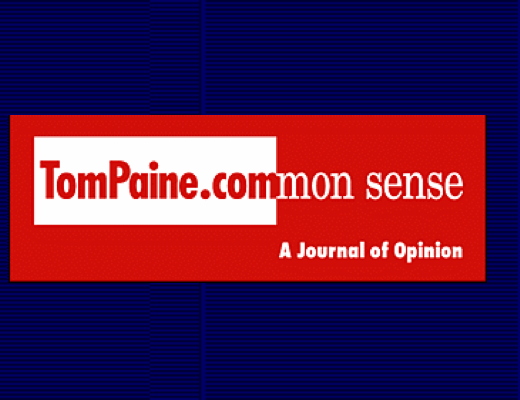Three years after the 1999 Seattle protests, a maturing social movement defies its negative label.
Published on TomPaine.com.
This month globalization protesters are back in the news, with a major gathering in Porto Alegre, Brazil and a demonstration against business elites in Davos, Switzerland. With this new round of actions, we can once again count on critics to dismiss popular resistance to corporate globalization as ineffective. Even during the movement’s most famous moment—when people filled the streets of Seattle in November 1999—Thomas Friedman of the New York Times branded demonstrators concerned about workers rights or environmental safeguards as “a Noah’s ark of flat-earth advocates, protectionist trade unions and yuppies looking for their 1960’s fix.” More recently, an official from the centrist Democratic Leadership Council deemed the dissenters “destined for irrelevance” after September 11.
In fact, the social movement continues to grow and mature. In addition to current events in Porto Alegre and Davos, the past four months alone have witnessed large-scale mobilizations in Hyderabad, India; in Quito, Ecuador; in Sydney, Australia and in Florence, Italy.
What have the demonstrations accomplished? Protests challenging institutions like the World Trade Organization (WTO) have been criticized for not having a clear message. In part, this lack of clarity is the result of lazy, or willfully ignorant, press coverage. As French President Jacques Chirac noted in Genoa, Italy, when a summit of leaders from G8 countries was surrounded by expansive marches in summer 2001, “A hundred thousand people don’t take to the streets unless something has seized their hearts and minds.”
It’s the job of the reporter to find out why so many people care.
Most generally, protesters charge institutions like the WTO and the International Monetary Fund (IMF) with worsening global poverty and undermining democratic decision-making. It is true, however, that there’s no single manifesto guiding the demonstrations. Part of movement’s strength lies in its ability to draw connections between issues as diverse as the AIDS crisis, Third World debt, rainforest destruction, the growth of global sweatshops, and the privatization of basic services like education and electricity.
One of the best ways to understand the point—and the impact—of protest is to look at the changes that the still-young political movement can already claim as victories. Beyond political and human rights advances that organizers in the developing world have made in their own countries, activists working across borders have forced a series international gains:
—It was only after the major demonstrations against the IMF and the World Bank in April 2000 that Congress passed legislation stating US opposition to loans that impose user fees for basic health care and education. As Robert Weissman pointed out in a September article in the Washington Post, this move ultimately helped 1.5 million more Tanzanian children to start school.
—Debt relief, the idea that wealthy nations should forgive the developing countries their obligation to make crushing loan payments, has gained mainstream appeal. This fact was well-publicized by the tour that rock star Bono made with Treasury Secretary Paul O’Neill in May 2002.
—Public criticism has forced a measure of accountability and transparency amongst trade negotiators who prefer to do their business behind closed doors. While disclosures have still been far from adequate, pressure from groups that protested in Quebec City in April 2001 eventually resulted in the public release of plans for a Free Trade Area of the Americas (FTAA).
—In April 2000, Starbucks caved in to campaigning from the San Francisco-based advocacy group Global Exchange and agreed to offer “fair trade” coffee. This certification assures that the beans are produced under fair working conditions and that farmers in the developing world are paid just rates for their crops. The Starbucks agreement was expanded in October 2000.
—In 2001, widespread outrage forced multinational pharmaceutical companies to drop intellectual property lawsuits against African governments seeking to provide affordable, generic AIDS drugs for their citizens. This victory served as a crucial step in combating the continent-wide public health crisis.
“They won the verbal and policy battle,” said Gary Hufbauer, a “pro-globalization” economist at the Institute for International Economics, in a recent Los Angeles Times interview about the protests. “They did shift policy.”
In making these changes, politicians, corporations, and trade organizations focused more on their own public relations than on social justice. And few activists gained much satisfaction from such mild reforms. But these shifts also point in the direction of larger change. A growing number of elites, like the World Bank’s former Chief Economist Joseph Stiglitz, are now defecting from the “Washington Consensus.” For decades, this set of business-friendly conditions was forced upon any poor country seeking financial support.
Economic crises in places like Argentina and the collapse of IMF darlings like Enron has further marred the once-unquestioned economic orthodoxy. At the same time, such developments have only strengthened the call for global alternatives.
In this context, it is important to note that three of the largest recent activist assemblies—gatherings in Porto Alegre, Florence, and Hyderabad – took the shape of “Social Forums.” Each event broke from the pattern of protesters “summit-hopping” in pursuit of multilateral trade meetings. Instead, the massive international teach-ins drew together tens of thousands of people to discuss visions for a new type of globalization, one designed to benefit the world’s poor rather than elite investors.
The Social Forums offer staunch challenges to those who persist in the misleading habit of labeling protests as “anti-globalization.” Almost instantly, these events made famous the slogan, “Another World is Possible.”
Contrary to what the pundits might think, that other world is making itself heard.
__________
Research assistance for this article provided by Katie Griffiths.
